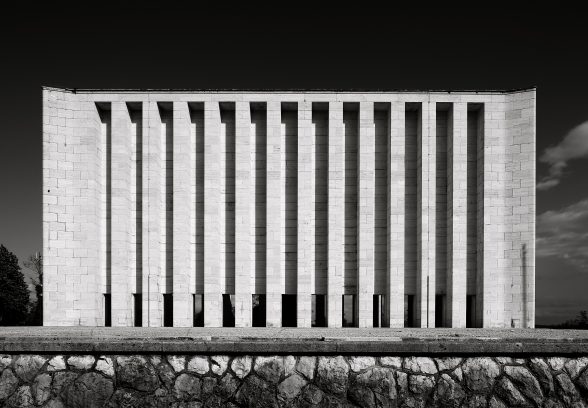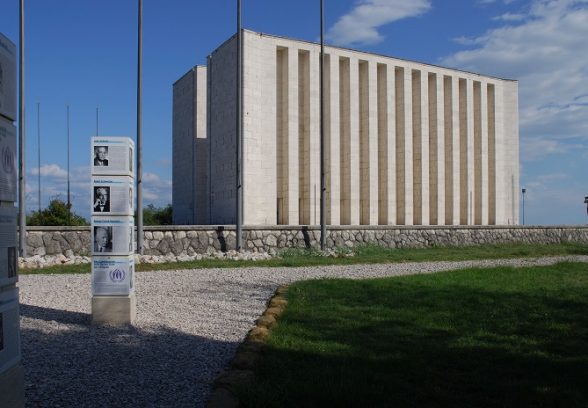This website uses cookies
This website uses cookies to enable it to function properly and to analyse how the website is used. Please click 'Close' to accept and continue using the website.









Italy: Medea, Ara Pacis
Architect: Mario Bacciocchi
Location: Medea, Italy
The Ara Pacis or Altar of Peace in Rome is a marble sculptured altar commissioned by the Roman Senate to honour the peace within the Empire established by the victories of the Emperor Augustus; it was largely excavated under the government of Mussolini, who commissioned a building for exhibiting it. Sited on a hill in an area full of the legacies and reminders of conflict, the Ara Pacis in Medea is a remarkable monument built soon after the end of the Second World War (and the removal of Mussolini) as a symbol of the sacrifice of the nation and to represent the hope of a world of peace, liberty and justice. It was built in six months to the design of the architect Mario Bacciocchi and inaugurated in 1951. The altar itself, an elegant Classical form, of porphyry from Valcamonica, contains earth taken from eight hundred war cemeteries, concentration camps and the like in both Italy and beyond. The inscription on one face reads L’ODIO PRODUCE MORTE / L’AMORE GENERA VITA. The altar stands within a 13 metre high enclosure of Roman travertine. At the narrow ends this is penetrated by a vertical opening; to north and south there are tall, severe colonnades – open the whole height between the square piers on one side, open only at a lower level on the other. The style could be described as stripped Classical, but the design – with the end piers gently canted outwards and rounded corners – is much more subtle than the typical public monuments of the 1930s.
The project to build the Ara Pacis was supported by the Associazione Nazionale Famiglie Caduti e Dispersi in Guerra. Mario Bacciocchi (1902-74) was from Milan, where he designed some flats in the 1930s; after the war he designed church of St Angela Merici (1957-59), the tower block in Piazza Diaz and the streamlined Agip petrol station (1953).
Gavin Stamp
Either enter the name of a place or memorial or choose from the drop down list. The list groups memorials in London and then by country

Become a C20 member today and help save our modern design heritage.